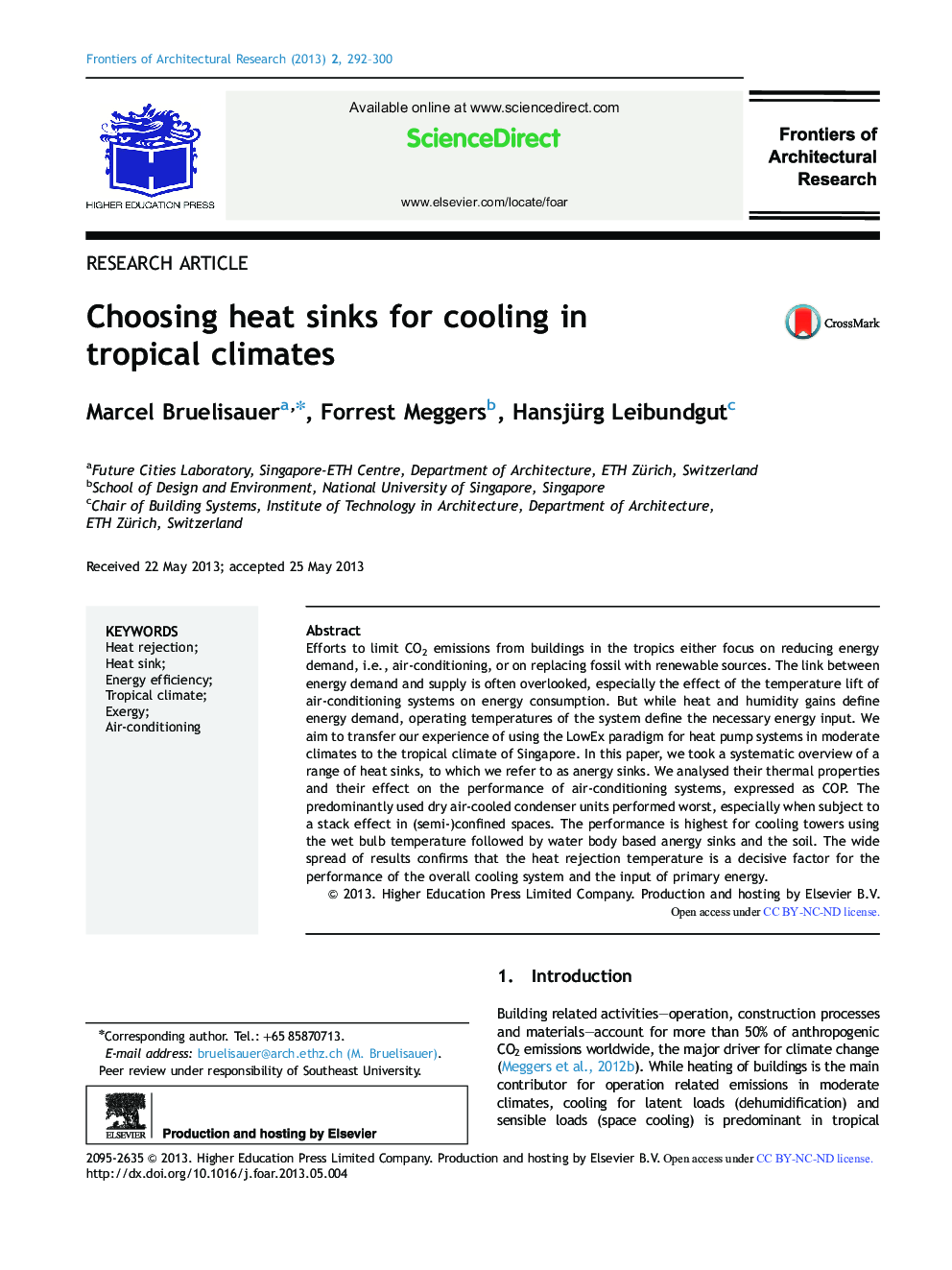| کد مقاله | کد نشریه | سال انتشار | مقاله انگلیسی | نسخه تمام متن |
|---|---|---|---|---|
| 270825 | 1429279 | 2013 | 9 صفحه PDF | دانلود رایگان |

Efforts to limit CO2 emissions from buildings in the tropics either focus on reducing energy demand, i.e., air-conditioning, or on replacing fossil with renewable sources. The link between energy demand and supply is often overlooked, especially the effect of the temperature lift of air-conditioning systems on energy consumption. But while heat and humidity gains define energy demand, operating temperatures of the system define the necessary energy input. We aim to transfer our experience of using the LowEx paradigm for heat pump systems in moderate climates to the tropical climate of Singapore. In this paper, we took a systematic overview of a range of heat sinks, to which we refer to as anergy sinks. We analysed their thermal properties and their effect on the performance of air-conditioning systems, expressed as COP. The predominantly used dry air-cooled condenser units performed worst, especially when subject to a stack effect in (semi-)confined spaces. The performance is highest for cooling towers using the wet bulb temperature followed by water body based anergy sinks and the soil. The wide spread of results confirms that the heat rejection temperature is a decisive factor for the performance of the overall cooling system and the input of primary energy.
Journal: Frontiers of Architectural Research - Volume 2, Issue 3, September 2013, Pages 292–300